Looking for the perfect birdwatching adventure in Vietnam? Xuan Thuy National Park is a haven for bird enthusiasts. SIXT.VN offers convenient travel solutions to explore this natural wonder. Discover the diverse avian species and plan your trip with ease. Get ready to spot rare birds and enjoy Vietnam’s breathtaking landscapes.
1. What Makes Xuan Thuy National Park a Prime Birdwatching Location?
Xuan Thuy National Park is a prime birdwatching location because of its diverse habitats, strategic location, and conservation efforts. The park’s varied ecosystems, including mangroves, mudflats, and aquaculture ponds, support a rich array of bird species, making it an ideal destination for birdwatchers and nature enthusiasts alike.
Diverse Ecosystems
Xuan Thuy National Park boasts an array of ecosystems that cater to a wide range of bird species. The diverse habitats include:
- Mangrove Forests: These forests are crucial for many waterbirds, providing shelter and feeding grounds.
- Mudflats: Exposed during low tide, these areas are rich in invertebrates, attracting numerous shorebirds.
- Aquaculture Ponds: These man-made habitats provide additional feeding opportunities for various bird species.
- Coastal Scrub and Casuarina Woodlands: These areas offer refuge for landbirds and migratory species.
Strategic Location
The park’s location within the Red River Delta makes it a vital stopover for migratory birds following the East Asian-Australasian Flyway. This flyway is one of the world’s most important routes for migratory waterbirds, and Xuan Thuy National Park serves as a crucial refueling station for these birds during their long journeys.
Conservation Efforts
Xuan Thuy National Park is committed to conserving its natural resources and protecting its bird populations. The park implements various conservation strategies, including habitat restoration, anti-poaching patrols, and community engagement programs. These efforts help maintain the park’s biodiversity and ensure that future generations can enjoy its natural beauty.
Year-Round Birdwatching
The park provides excellent birdwatching opportunities throughout the year, with different species present during different seasons. Migratory birds are most abundant during the winter months (November to April), while resident species can be observed year-round.
2. What are Some of the Most Notable Bird Species Found in Xuan Thuy National Park?
Some of the most notable bird species found in Xuan Thuy National Park include the Black-faced Spoonbill, Marsh Sandpiper, and various species of herons and egrets. These birds highlight the park’s significance as a biodiversity hotspot and a crucial habitat for both resident and migratory species.
Black-faced Spoonbill (Platalea minor)
The Black-faced Spoonbill is one of the most iconic species in Xuan Thuy National Park. This endangered bird finds refuge in the park’s mangroves and mudflats, making it a major attraction for birdwatchers.
- Conservation Status: Endangered
- Habitat: Mangrove forests, mudflats
- Notable Features: Distinctive spoon-shaped bill, black facial markings
Marsh Sandpiper (Tringa stagnatilis)
The Marsh Sandpiper is a common sight in the park’s shallow waters and mudflats. These elegant birds are known for their slender bodies and graceful foraging behavior.
- Habitat: Shallow waters, mudflats
- Notable Features: Slender build, long legs, elegant movements
Herons and Egrets
Xuan Thuy National Park is home to a diverse array of herons and egrets, each with unique characteristics and ecological roles. Some notable species include:
- Chinese Pond Heron (Ardeola bacchus): Known for its seasonal color changes.
- Gray Heron (Ardea cinerea): A large, widespread species often seen wading in shallow waters.
- Little Egret (Egretta garzetta): Recognizable by its bright white plumage and black beak.
Other Notable Species
Besides these flagship species, Xuan Thuy National Park supports a wide variety of other birds, including:
- Shorebirds: Common Redshank, Common Greenshank, Little Ringed Plover
- Raptors: Eastern Marsh Harrier, Black-winged Kite
- Kingfishers: Common Kingfisher, Pied Kingfisher
- Songbirds: Oriental Turtle Dove, White’s Thrush, Pallas’s Leaf Warbler
3. What Types of Shorebirds Can Be Observed at Xuan Thuy National Park?
Several types of shorebirds can be observed at Xuan Thuy National Park, including the Broad-billed Sandpiper, Little Ringed Plover, and Common Redshank. These species thrive in the park’s mudflats and coastal areas, offering birdwatchers a diverse viewing experience.
Broad-billed Sandpiper (Calidris falcinellus)
The Broad-billed Sandpiper is a small, migratory shorebird that frequents the mudflats and coastal areas of Xuan Thuy National Park. Known for its distinctive bill shape, this species adds to the park’s rich avian diversity.
- Habitat: Mudflats, coastal areas
- Key Identification Features: The broad-billed sandpiper has a unique, wide bill that sets it apart from other sandpipers. Its plumage is typically a mix of brown and white, providing excellent camouflage in its natural habitat.
- Behavior: This bird is often seen foraging in the mud, using its specialized bill to probe for invertebrates.
- Conservation Status: While not currently listed as endangered, the broad-billed sandpiper faces threats from habitat loss and degradation, making protected areas like Xuan Thuy National Park crucial for its survival.
Little Ringed Plover (Charadrius dubius)
The Little Ringed Plover is another common shorebird found in Xuan Thuy National Park. This small plover is known for its distinctive yellow eye-ring and preference for sandy and muddy habitats.
- Habitat: Sandy and muddy shores
- Key Identification Features: The little ringed plover is easily identified by its bright yellow eye-ring and a single black band across its chest. Its small size and quick movements also help distinguish it from other plover species.
- Behavior: This plover is often seen running along the shoreline, searching for insects and small invertebrates.
- Conservation Status: The little ringed plover is relatively common and widespread, but it still benefits from the protection offered by national parks like Xuan Thuy.
Common Redshank (Tringa totanus)
The Common Redshank is a medium-sized shorebird that is frequently observed in the wetlands and mudflats of Xuan Thuy National Park. Known for its reddish legs and distinctive call, this species is an integral part of the park’s ecosystem.
- Habitat: Wetlands, mudflats
- Key Identification Features: The common redshank is characterized by its bright reddish legs and a long, slightly upturned bill. Its plumage is a mottled brown, providing camouflage in its marshy habitat.
- Behavior: This bird is often seen wading in shallow water, probing the mud for invertebrates. Its loud, distinctive call makes it easy to locate.
- Conservation Status: The common redshank is a protected species, and its presence in Xuan Thuy National Park highlights the importance of the area for shorebird conservation.
Additional Shorebird Species
Besides the Broad-billed Sandpiper, Little Ringed Plover, and Common Redshank, Xuan Thuy National Park is home to a variety of other shorebird species, including:
- Marsh Sandpiper (Tringa stagnatilis): Known for its slender build and graceful movements.
- Common Greenshank (Tringa nebularia): A larger shorebird with greenish legs.
- Kentish Plover (Charadrius alexandrinus): A small plover with a distinctive black band on its sides.
4. Are There Any Raptors or Birds of Prey That Inhabit Xuan Thuy National Park?
Yes, there are raptors or birds of prey that inhabit Xuan Thuy National Park, including the Eastern Marsh Harrier and Black-winged Kite. These birds play a crucial role in the park’s ecosystem by helping to control populations of rodents and other small animals.
Eastern Marsh Harrier (Circus spilonotus)
The Eastern Marsh Harrier is a medium-sized raptor often seen soaring over the wetlands and marshy areas of Xuan Thuy National Park. This bird of prey is an opportunistic hunter, preying on small mammals, birds, and insects.
- Habitat: Wetlands, marshy areas
- Key Identification Features: The Eastern Marsh Harrier has a distinctive flight pattern, often flying low over the ground with its wings held in a V-shape. Adult males have greyish-blue upperparts and white underparts, while females and juveniles are mostly brown.
- Hunting Behavior: These harriers use their keen eyesight to spot prey from above. They often drop suddenly to catch their targets, using their sharp talons to secure their meal.
- Ecological Role: As a top predator, the Eastern Marsh Harrier helps control populations of rodents and other small animals, contributing to the overall health of the wetland ecosystem.
Black-winged Kite (Elanus caeruleus)
The Black-winged Kite is another notable raptor found in Xuan Thuy National Park. This small, elegant bird of prey is known for its distinctive black and white plumage and its habit of hovering over open fields in search of prey.
- Habitat: Open fields, grasslands
- Key Identification Features: The Black-winged Kite is easily recognized by its striking black and white plumage, with black shoulder patches and white underparts. It has a slender body and long, pointed wings.
- Hunting Behavior: These kites are often seen hovering in the air, scanning the ground for rodents and other small animals. They have excellent eyesight and can spot prey from a considerable distance.
- Ecological Role: Like the Eastern Marsh Harrier, the Black-winged Kite plays an important role in controlling rodent populations, helping to maintain the balance of the ecosystem.
Other Potential Raptors
While the Eastern Marsh Harrier and Black-winged Kite are the most commonly observed raptors in Xuan Thuy National Park, other species may also be present, though less frequently. These could include:
- Osprey (Pandion haliaetus): A fish-eating raptor that may visit the park during migration.
- Peregrine Falcon (Falco peregrinus): A fast-flying falcon that may hunt birds in the area.
- Eurasian Kestrel (Falco tinnunculus): A small falcon that may be seen hunting in open areas.
5. Are There Any Kingfishers Residing in Xuan Thuy National Park?
Yes, there are kingfishers residing in Xuan Thuy National Park, including the Common Kingfisher and Pied Kingfisher. These vibrant birds are often seen near the park’s waterways, where they hunt for fish and other aquatic prey.
Common Kingfisher (Alcedo atthis)
The Common Kingfisher is a small, brightly colored bird that is frequently observed near the waterways of Xuan Thuy National Park. Known for its striking blue plumage and rapid flight, this species is a favorite among birdwatchers.
- Habitat: Rivers, streams, ponds, and other waterways
- Key Identification Features: The Common Kingfisher is easily identified by its bright blue upperparts, orange underparts, and a long, pointed bill. It has a compact body and short tail.
- Hunting Behavior: These kingfishers are skilled hunters, often perching on branches or hovering above the water before diving to catch fish. They have excellent eyesight and can spot prey from a considerable distance.
- Ecological Role: As a top predator in aquatic ecosystems, the Common Kingfisher helps control fish populations, contributing to the overall health of the environment.
Pied Kingfisher (Ceryle rudis)
The Pied Kingfisher is another notable kingfisher species found in Xuan Thuy National Park. This medium-sized bird is known for its black and white plumage and its distinctive hovering flight.
- Habitat: Rivers, lakes, and coastal areas
- Key Identification Features: The Pied Kingfisher is characterized by its black and white plumage, a shaggy crest, and a long, sturdy bill. It has a larger body size compared to the Common Kingfisher.
- Hunting Behavior: Unlike the Common Kingfisher, the Pied Kingfisher often hovers above the water before diving headfirst to catch fish. This hunting technique allows it to forage in deeper waters.
- Ecological Role: Like other kingfishers, the Pied Kingfisher plays an important role in controlling fish populations, helping to maintain the balance of aquatic ecosystems.
Habitat and Behavior
Both the Common Kingfisher and Pied Kingfisher are adapted to life near water, with streamlined bodies and sharp bills that allow them to efficiently catch fish. They are often seen perching on branches or rocks near the water’s edge, waiting for an opportunity to strike.
6. What Kind of Songbirds Might You Encounter in Xuan Thuy National Park?
You might encounter several kinds of songbirds in Xuan Thuy National Park, including the Oriental Turtle Dove, Northern Sooty-headed Bulbul, and Pallas’s Leaf Warbler. These species add to the park’s vibrant soundscape and provide excellent birdwatching opportunities for enthusiasts.
Oriental Turtle Dove (Streptopelia orientalis)
The Oriental Turtle Dove is a common songbird found in Xuan Thuy National Park. Known for its gentle cooing and distinctive markings, this species is often seen in wooded areas and gardens.
- Habitat: Wooded areas, gardens, and agricultural fields
- Key Identification Features: The Oriental Turtle Dove is characterized by its soft gray-brown plumage, a black patch on the side of its neck with white edges, and a slender build. It has a gentle, cooing call that is often heard in the early morning.
- Behavior: These doves are often seen foraging on the ground, searching for seeds and grains. They are relatively tame and can be found in close proximity to human habitation.
- Ecological Role: The Oriental Turtle Dove plays a role in seed dispersal, helping to maintain the health of plant communities.
Northern Sooty-headed Bulbul (Pycnonotus chrysorrhoides)
The Northern Sooty-headed Bulbul is another notable songbird species in Xuan Thuy National Park. Known for its lively calls and distinctive appearance, this bulbul is often seen in scrubby areas and along the edges of mangrove forests.
- Habitat: Scrubby areas, forest edges, and gardens
- Key Identification Features: The Northern Sooty-headed Bulbul has a distinctive appearance with a black head, white throat, and yellowish underparts. It has a lively, chattering call that is often heard throughout the day.
- Behavior: These bulbuls are active foragers, feeding on fruits, insects, and nectar. They are often seen in small groups, moving through the vegetation in search of food.
- Ecological Role: The Northern Sooty-headed Bulbul plays a role in seed dispersal and pollination, helping to maintain the health of plant communities.
Pallas’s Leaf Warbler (Phylloscopus proregulus)
Pallas’s Leaf Warbler is a small, migratory songbird that visits Xuan Thuy National Park during the winter months. Known for its tiny size and distinctive call, this warbler is often seen in the park’s woodlands.
- Habitat: Woodlands and scrubby areas
- Key Identification Features: Pallas’s Leaf Warbler is a tiny bird with greenish upperparts, whitish underparts, and a bright yellow stripe on its head. It has a distinctive, high-pitched call that is often heard in the treetops.
- Behavior: These warblers are highly active, flitting through the branches in search of insects. They are often seen in mixed-species flocks, foraging alongside other small birds.
- Ecological Role: Pallas’s Leaf Warbler plays a role in controlling insect populations, helping to maintain the health of forest ecosystems.
7. What is the Best Time of Year to Visit Xuan Thuy National Park for Birdwatching?
The best time of year to visit Xuan Thuy National Park for birdwatching is during the winter months, from November to April. This period coincides with the migration of numerous bird species from colder climates, making the park a vibrant hub for avian activity.
Winter Months (November to April)
During the winter months, Xuan Thuy National Park becomes a haven for migratory birds seeking refuge from the cold northern climates. This period offers the best opportunities to observe a wide variety of species, including shorebirds, waterfowl, and songbirds.
-
Migratory Birds: Numerous species migrate to Xuan Thuy National Park during the winter months, including:
- Shorebirds: Broad-billed Sandpiper, Little Ringed Plover, Common Redshank
- Waterfowl: Northern Shoveler, Eurasian Teal
- Songbirds: Pallas’s Leaf Warbler, Daurian Redstart
-
Abundant Birdlife: The park’s diverse habitats support a high concentration of birds during the winter, making it an ideal time for birdwatching enthusiasts.
-
Favorable Weather: The weather during the winter months is generally mild and pleasant, with cooler temperatures and lower humidity, providing comfortable conditions for outdoor activities.
Other Times of Year
While the winter months offer the best birdwatching opportunities, Xuan Thuy National Park can be visited year-round. Each season brings its own unique avian attractions.
- Spring (March to May): This is a good time to see resident species breeding and migratory birds passing through on their way north.
- Summer (June to August): While the weather can be hot and humid, this is a good time to see local waterbirds and other resident species.
- Autumn (September to November): This is another good time for migration, as birds begin their journey south for the winter.
8. What Facilities and Services are Available for Birdwatchers at Xuan Thuy National Park?
Facilities and services available for birdwatchers at Xuan Thuy National Park include lodging, guides, and transportation options. These amenities help enhance the birdwatching experience and ensure visitors have a comfortable and informative stay.
Lodging
Xuan Thuy National Park offers basic lodging facilities at its headquarters, providing a convenient base for birdwatchers to explore the park.
- Park Lodge: The park lodge features rooms that are clean, quiet, and equipped with essential amenities such as Wi-Fi, electric fans, and mosquito nets.
- Budget-Friendly: The lodging is reasonably priced, making it an affordable option for birdwatchers on a budget.
Guides
Hiring a local guide can significantly enhance the birdwatching experience at Xuan Thuy National Park.
- Expert Knowledge: Local guides possess in-depth knowledge of the park’s birdlife and can help visitors spot rare and elusive species.
- Navigation: Guides can assist with navigating the park’s complex network of roads and waterways, ensuring visitors reach the best birdwatching locations.
- Arranging Services: Park management can arrange for local guides, making it easy for visitors to access their services.
Transportation
Getting around Xuan Thuy National Park can be facilitated through various transportation options.
- Motorbike Rentals: Renting a motorbike is a popular way to explore the park, allowing visitors to access remote areas and cover more ground.
- Boat Trips: Boat trips can be arranged to visit offshore islands and observe shorebirds at close range.
Other Services
In addition to lodging, guides, and transportation, Xuan Thuy National Park offers other services to enhance the visitor experience.
- Park Manager Assistance: The park manager is friendly and helpful, providing valuable information and assistance to visitors.
- Cafeteria: A cafeteria is available at the park headquarters, offering basic meals and refreshments.
9. What Challenges Might Visitors Face When Birdwatching at Xuan Thuy National Park?
Visitors might face challenges such as language barriers, limited infrastructure, and logistical difficulties when birdwatching at Xuan Thuy National Park. However, with proper preparation and local assistance, these challenges can be managed effectively.
Language Barriers
One of the primary challenges for foreign visitors is the language barrier. English is not widely spoken in the rural areas surrounding the park, which can make communication difficult.
- Communication Difficulties: Visitors may struggle to communicate with local residents, park staff, and service providers.
- Misunderstandings: Language barriers can lead to misunderstandings and logistical challenges.
Limited Infrastructure
Xuan Thuy National Park is a protected area with limited infrastructure, which can pose challenges for visitors.
- Road Conditions: Road conditions within the park can be poor, making travel difficult, especially during the rainy season.
- Accommodation Standards: Accommodation standards at the park lodge are basic, and amenities may be limited.
- Food Options: Food options within the park are limited, and visitors may need to travel to nearby villages for meals.
Logistical Difficulties
Logistical difficulties can arise when planning and executing a birdwatching trip to Xuan Thuy National Park.
- Transportation: Arranging transportation to and from the park can be challenging, especially for those unfamiliar with the area.
- Park Information: Obtaining accurate and up-to-date information about the park can be difficult, as online resources may be limited or outdated.
- Local Services: Accessing local services such as guides and transportation may require advance planning and negotiation.
Navigational Challenges
Navigating the park can be challenging due to unmarked roads and confusing routes.
- Unmarked Roads: Many roads within the park are unmarked, making it easy to get lost.
- GPS Limitations: GPS navigation may be unreliable in some areas due to poor signal coverage or inaccurate mapping data.
Potential Solutions
Despite these challenges, visitors can take steps to mitigate the difficulties and enjoy a successful birdwatching trip to Xuan Thuy National Park.
- Learn Basic Vietnamese Phrases: Learning a few basic Vietnamese phrases can help facilitate communication with local residents.
- Hire a Local Guide: Hiring a local guide can provide valuable assistance with navigation, communication, and logistics.
- Plan Ahead: Planning ahead and making arrangements for transportation, accommodation, and local services can help minimize logistical challenges.
- Use Offline Maps: Downloading offline maps and GPS data can help with navigation in areas with limited internet access.
- Be Patient and Flexible: Visitors should be prepared to be patient and flexible, as unexpected challenges may arise.
10. How Can SIXT.VN Enhance Your Birdwatching Trip to Xuan Thuy National Park?
SIXT.VN can enhance your birdwatching trip to Xuan Thuy National Park by providing convenient and reliable travel solutions. From airport transfers to hotel bookings and tour arrangements, SIXT.VN ensures a hassle-free and enjoyable experience.
Airport Transfers
SIXT.VN offers seamless airport transfer services, ensuring you arrive at your destination comfortably and on time.
- Convenient Pick-Up: SIXT.VN provides pick-up services from major airports, including Noi Bai International Airport in Hanoi.
- Reliable Transportation: Enjoy reliable and comfortable transportation to Xuan Thuy National Park, eliminating the stress of navigating unfamiliar roads.
- Professional Drivers: Experienced drivers ensure a safe and efficient journey, allowing you to relax and prepare for your birdwatching adventure.
Hotel Bookings
SIXT.VN assists with booking accommodations, offering a range of options to suit your preferences and budget.
- Variety of Choices: Choose from a variety of hotels and guesthouses near Xuan Thuy National Park.
- Convenient Booking: SIXT.VN simplifies the booking process, making it easy to find and reserve the perfect accommodation for your stay.
- Quality Assurance: SIXT.VN partners with reputable establishments to ensure quality and comfort during your trip.
Tour Arrangements
SIXT.VN offers customized tour packages to enhance your birdwatching experience in Xuan Thuy National Park.
- Guided Tours: Enjoy guided tours led by knowledgeable local experts, providing insights into the park’s birdlife and ecosystems.
- Customized Itineraries: Tailor your itinerary to focus on specific bird species or areas of interest, ensuring a personalized and rewarding experience.
- Hassle-Free Planning: SIXT.VN handles all the details, from transportation to park permits, allowing you to focus on enjoying your birdwatching adventure.
Additional Services
In addition to airport transfers, hotel bookings, and tour arrangements, SIXT.VN provides other services to enhance your trip.
- Travel Advice: Receive expert travel advice and tips to help you prepare for your birdwatching trip.
- Local Support: Access local support and assistance throughout your trip, ensuring a smooth and enjoyable experience.
- Customer Service: Enjoy responsive customer service to address any questions or concerns you may have.
Ready to explore the avian wonders of Xuan Thuy National Park? Let SIXT.VN take care of your travel needs. Contact us today to book your airport transfer, hotel, and guided tour!
Address: 260 Cau Giay, Hanoi, Vietnam
Hotline/Whatsapp: +84 986 244 358
Website: SIXT.VN
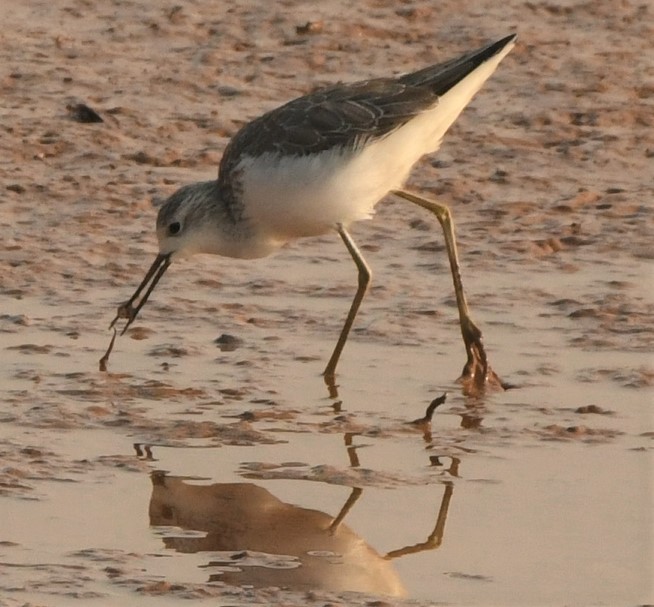 Marsh Sandpiper Xuan Thuy National Park 8 December 2019 Callyn Yorke
Marsh Sandpiper Xuan Thuy National Park 8 December 2019 Callyn Yorke
 Xuan Thuy Park advertisement next to a road block on the sea wall drive; the first sign that we were somewhere within the park boundaries. 8 December 2019 Callyn Yorke
Xuan Thuy Park advertisement next to a road block on the sea wall drive; the first sign that we were somewhere within the park boundaries. 8 December 2019 Callyn Yorke
 Viewing north from an observation tower about 4 km from XNP headquarters 8 December 2019 Callyn Yorke
Viewing north from an observation tower about 4 km from XNP headquarters 8 December 2019 Callyn Yorke
 Balcony corridor of the XNP lodge 8 December 2019 C. Yorke
Balcony corridor of the XNP lodge 8 December 2019 C. Yorke
 Room #9 Xuan Thuy park lodge 8 December 2019 Callyn Yorke
Room #9 Xuan Thuy park lodge 8 December 2019 Callyn Yorke
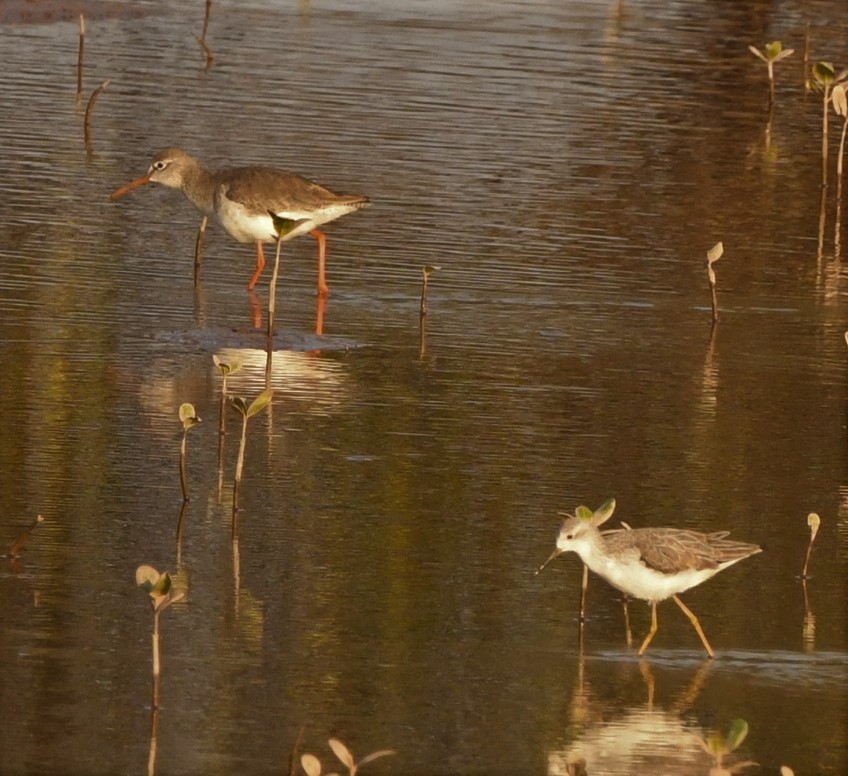 Common Redshank (top left) and Marsh Sandpiper (bottom right) Xuan Thuy NP 8 Dec 2019 Callyn Yorke
Common Redshank (top left) and Marsh Sandpiper (bottom right) Xuan Thuy NP 8 Dec 2019 Callyn Yorke
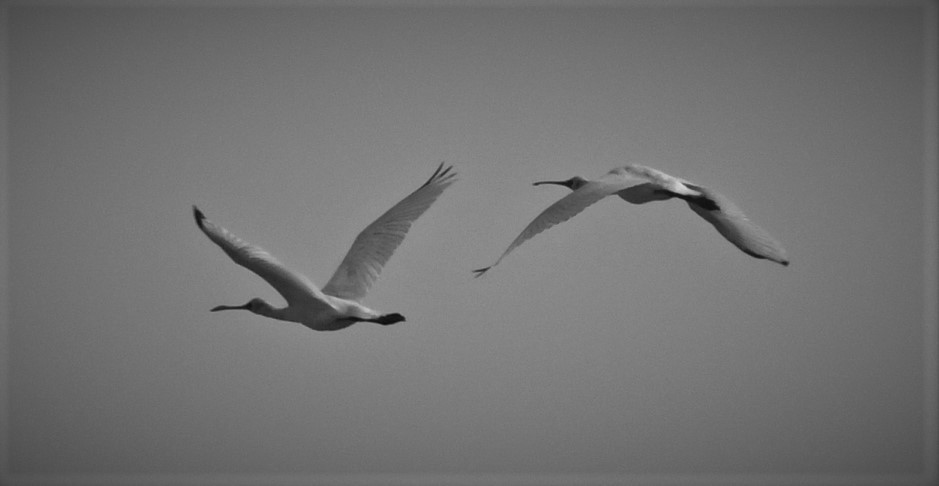 Black-faced Spoonbill (Platalea minor) Xuan Thuy National Park, Vietnam 8 December 2019 Callyn Yorke
Black-faced Spoonbill (Platalea minor) Xuan Thuy National Park, Vietnam 8 December 2019 Callyn Yorke
 White’s Thrush Xuan Thuy National Park HQ 10 December 2019 Callyn Yorke
White’s Thrush Xuan Thuy National Park HQ 10 December 2019 Callyn Yorke
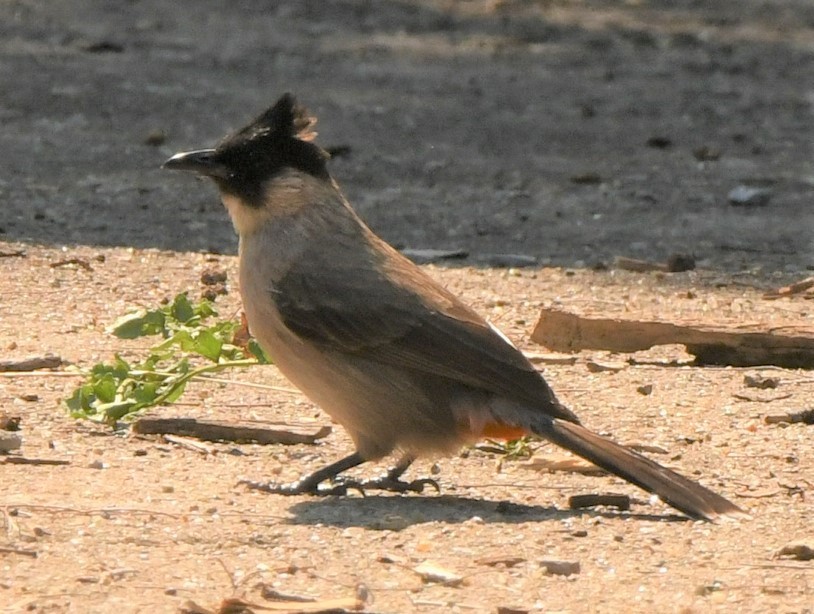 Northern Sooty-headed Bulbul Xuan Thuy NP HQ 9 December 2019 Callyn Yorke
Northern Sooty-headed Bulbul Xuan Thuy NP HQ 9 December 2019 Callyn Yorke
 Orange-flanked Bush-Robin XNP HQ 9 Dec 2019 Callyn Yorke
Orange-flanked Bush-Robin XNP HQ 9 Dec 2019 Callyn Yorke
 Chinese Long-tailed Shrike Xuan Thuy National Park 8 December 2019 Callyn Yorke
Chinese Long-tailed Shrike Xuan Thuy National Park 8 December 2019 Callyn Yorke
 Map of Xuan Thuy National Park (in part) showing our boating trip route 9 Dec 2019 Callyn Yorke
Map of Xuan Thuy National Park (in part) showing our boating trip route 9 Dec 2019 Callyn Yorke
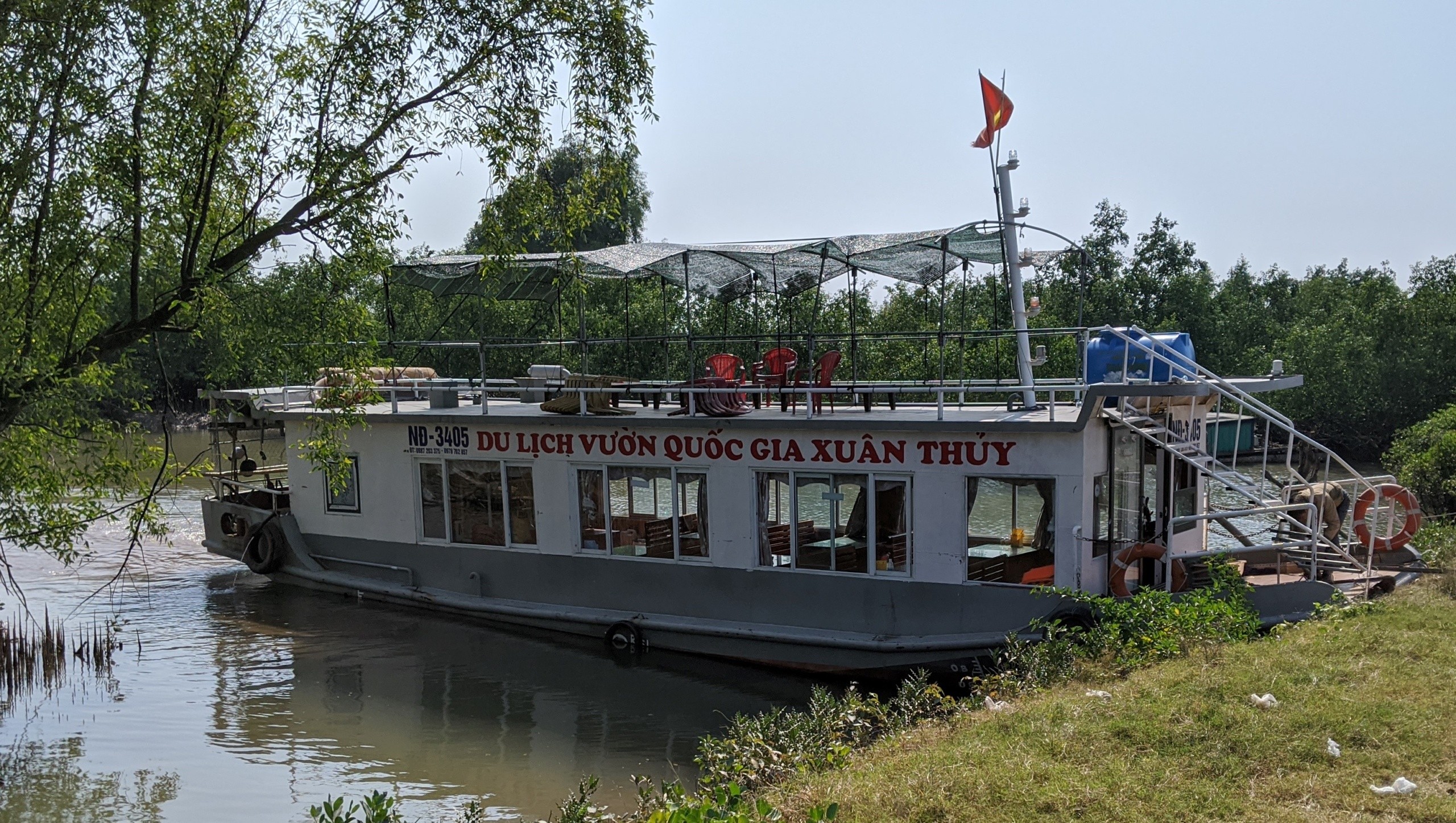 Our birding tour boat in Xuan Thuy National Park 9 December 2019 Callyn Yorke
Our birding tour boat in Xuan Thuy National Park 9 December 2019 Callyn Yorke
 Presumed Broad-billed Sandpiper, outer island Xuan Thuy NP 9 December 2019 Callyn Yorke
Presumed Broad-billed Sandpiper, outer island Xuan Thuy NP 9 December 2019 Callyn Yorke
 Crabber from the black lagoon Xuan Thuy National Park 8 December 2019 Callyn Yorke
Crabber from the black lagoon Xuan Thuy National Park 8 December 2019 Callyn Yorke
 Eastern Marsh Harrier Xuan Thuy National Park 9 December 2019 Callyn Yorke
Eastern Marsh Harrier Xuan Thuy National Park 9 December 2019 Callyn Yorke
 Common Kingfisher Xuan Thuy NP HQ 10 Dec 2019 Callyn Yorke
Common Kingfisher Xuan Thuy NP HQ 10 Dec 2019 Callyn Yorke
 The author, Xuan Thuy National Park 9 December 2019, Da Thao Nguyen
The author, Xuan Thuy National Park 9 December 2019, Da Thao Nguyen
 Red Turtle Dove (Streptopelua tranquebarica) Xuan Thuy NP HQ 10 December 2019 Callyn Yorke
Red Turtle Dove (Streptopelua tranquebarica) Xuan Thuy NP HQ 10 December 2019 Callyn Yorke
 Oriental Turtle (Streptopelia orientalis) Xuan Thuy PHQ 10 December 2019 Callyn Yorke
Oriental Turtle (Streptopelia orientalis) Xuan Thuy PHQ 10 December 2019 Callyn Yorke
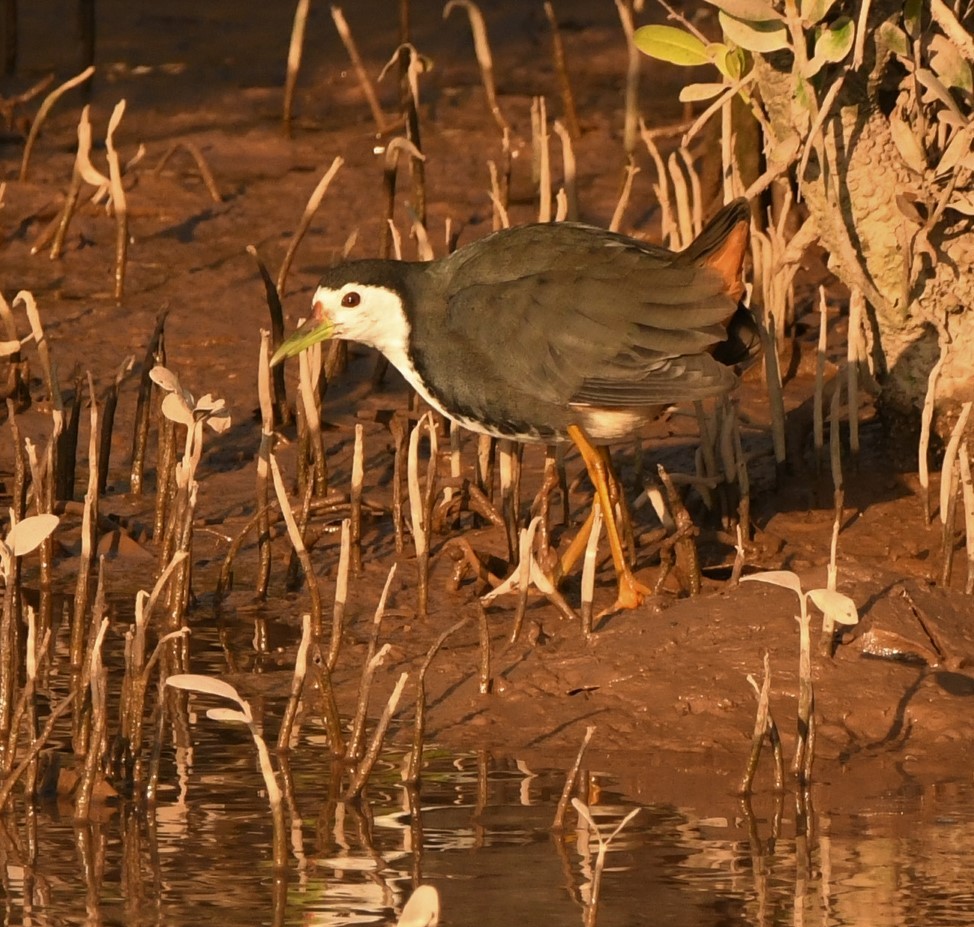 White-breasted Waterhen (Amaurornis phoenicurus) Xuan Thuy NP 9 December 2019 Callyn Yorke
White-breasted Waterhen (Amaurornis phoenicurus) Xuan Thuy NP 9 December 2019 Callyn Yorke
 Black-faced Spoonbill (Platalea minor) Xuan Thuy National Park, Vietnam 8 December 2019 Callyn Yorke
Black-faced Spoonbill (Platalea minor) Xuan Thuy National Park, Vietnam 8 December 2019 Callyn Yorke
 Chinese Pond Heron (Ardeola bacchus) immature Xuan Thuy National Park 8 December 2019 Callyn Yorke
Chinese Pond Heron (Ardeola bacchus) immature Xuan Thuy National Park 8 December 2019 Callyn Yorke
 Gray Heron (Ardea cinerea) Xuan Thuy NP 9 December 2019 Callyn Yorke
Gray Heron (Ardea cinerea) Xuan Thuy NP 9 December 2019 Callyn Yorke
 Pacific Golden Plover (Pluvialus fulva) Xuan Thuy National Park 9 December 2019 Callyn Yorke
Pacific Golden Plover (Pluvialus fulva) Xuan Thuy National Park 9 December 2019 Callyn Yorke
 Common Sandpiper (Actitis hypoleucos) Xuan Thuy NP 9 December 2019 Callyn Yorke
Common Sandpiper (Actitis hypoleucos) Xuan Thuy NP 9 December 2019 Callyn Yorke
 Common Greenshank (Tringa nebularia) Xuan Thuy National Park 9 December 2019 Callyn Yorke
Common Greenshank (Tringa nebularia) Xuan Thuy National Park 9 December 2019 Callyn Yorke
 Common Redshank (Tringa totqnus) Xuan Thuy NP 9 December 2019 Callyn Yorke
Common Redshank (Tringa totqnus) Xuan Thuy NP 9 December 2019 Callyn Yorke
 Marsh Sandpiper (Tringa stagnatilis) Xuan Thuy NP 9 Dec. 2019 Callyn Yorke
Marsh Sandpiper (Tringa stagnatilis) Xuan Thuy NP 9 Dec. 2019 Callyn Yorke
 Common Kingfisher (Alcedo atthis) Xuan Thuy NPHQ 10 December 2019 Callyn Yorke
Common Kingfisher (Alcedo atthis) Xuan Thuy NPHQ 10 December 2019 Callyn Yorke



